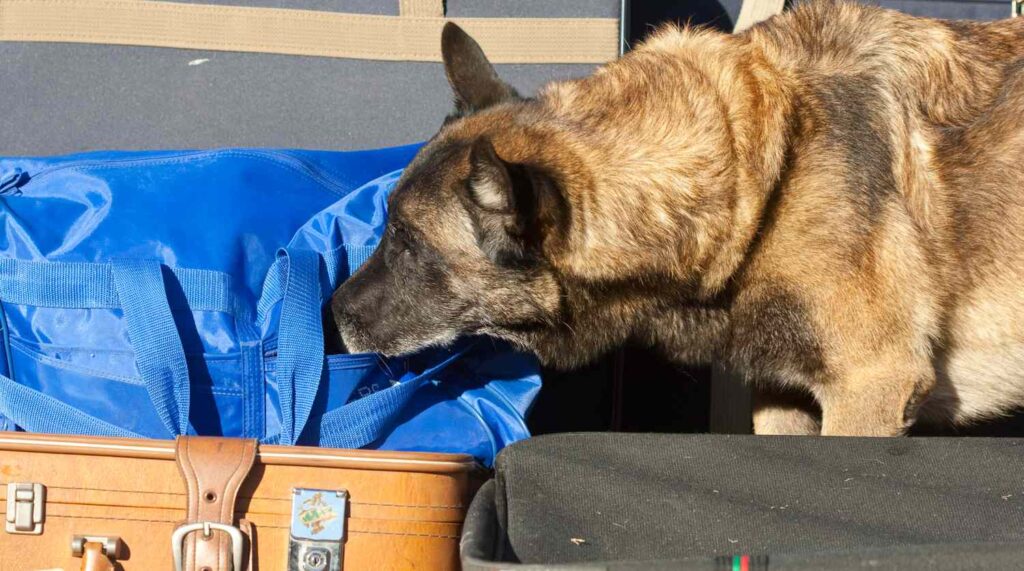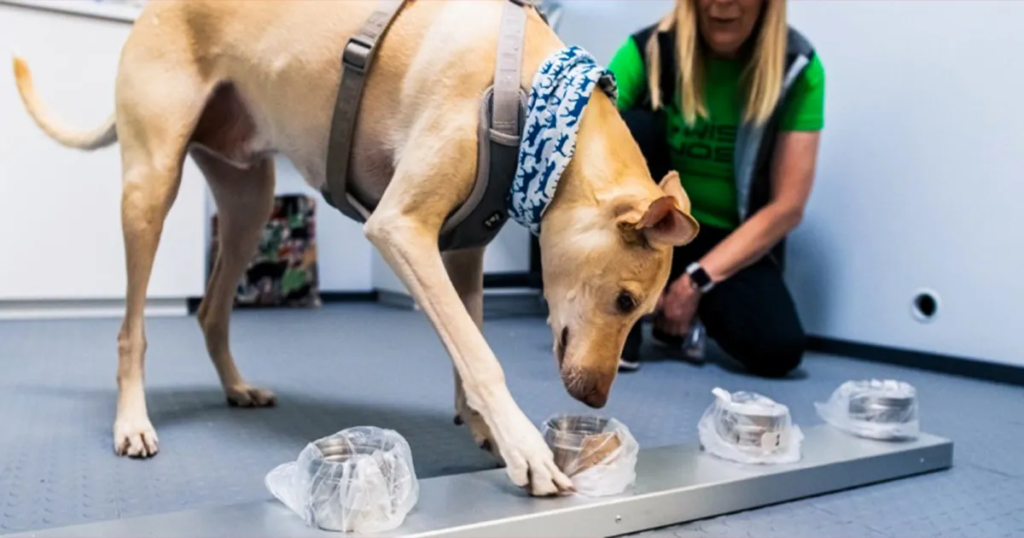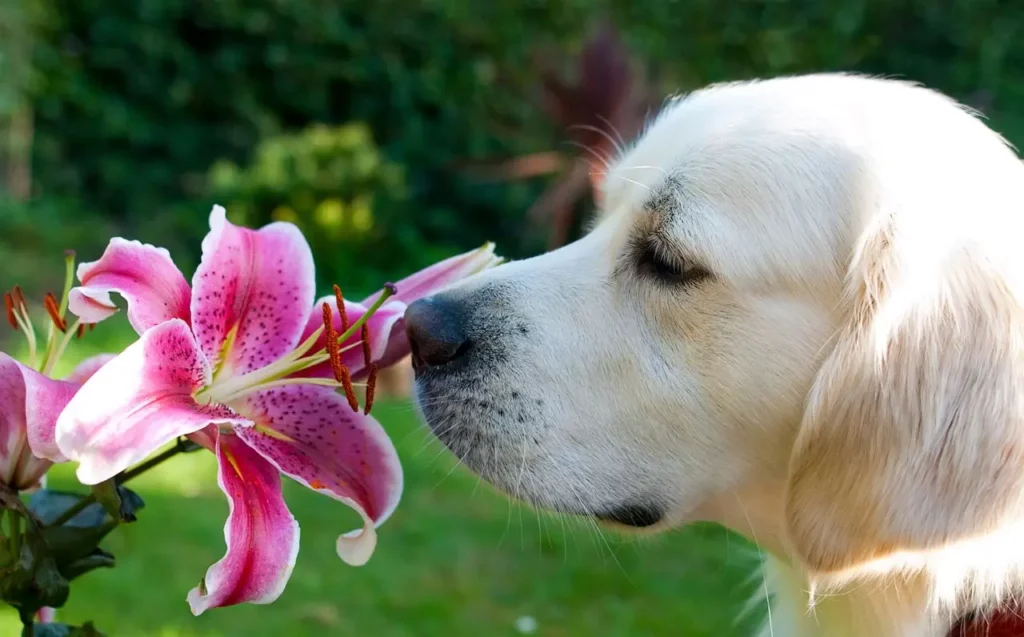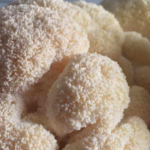Welcome to our exploration of an intriguing question: Can drug dogs smell mushrooms? In this comprehensive guide, we’ll delve into the fascinating world of drug detection dogs and their ability to sniff out mushrooms, particularly magic mushrooms like psilocybin. This topic is not only of interest to those curious about the capabilities of these remarkable animals but also to individuals concerned about the implications for personal or legal reasons. Let’s dive in and uncover the truth behind this intriguing question.
Five Facts
Five key facts about drug dogs’ ability to detect mushrooms include their remarkable sense of smell, rigorous training to recognize specific odors, influence of environmental conditions on detection, variability in breeds used, and limitations such as struggling with new substances or synthetic drugs.
Drug Dogs’ Remarkable Sense of Smell
Drug detection dogs possess an extraordinary sense of smell, with approximately 300 million olfactory receptors in their noses. This remarkable ability allows them to detect even minute traces of odors, including those emitted by illicit substances like magic mushrooms.
Training for Detection
Drug dogs undergo rigorous training to recognize the specific odor compounds associated with various drugs, including mushrooms. Handlers expose these canines to the scent of psilocybin during their training process, enabling them to develop the ability to detect these substances effectively.
Environmental Influence
Environmental conditions, such as wind and weather, play a crucial role in a drug dog’s ability to detect mushrooms. Factors like wind direction and atmospheric conditions can impact the dispersion and concentration of scent particles, affecting the dog’s effectiveness in detecting drugs.
Breed Variability
Different breeds of dogs exhibit varying levels of scent detection capabilities. While some breeds, like bloodhounds, are renowned for their exceptional sense of smell and are often employed in search and rescue operations, other breeds may have different strengths and weaknesses in drug detection.
Limitations and Challenges
Despite their impressive abilities, drug detection dogs have limitations. They may struggle to detect new or uncommon substances, synthetic drugs with changing compositions, or drugs that are well-concealed or stored inside body cavities. Training dogs to detect mushrooms also poses unique challenges due to differences in odor compounds compared to other drugs.
Can Drug Detection Dogs Smell Magic Mushrooms?

The burning question remains: Can drug dogs detect magic mushrooms? The answer is a resounding yes. Drug detection dogs can be trained to detect psychedelic shrooms, including psilocybin mushrooms. Their training encompasses exposure to the distinct odor compounds associated with these mushrooms, enabling them to recognize and alert their handlers to their presence effectively. You can also read about golden teacher mushrooms
Training of Drug Detection Dogs
In the training of drug detection dogs, handlers utilize positive reinforcement techniques to associate drug odors with rewards. Dogs are exposed to various drug scents, including mushrooms like psilocybin, to develop their detection abilities. Rigorous training ensures these canine counterparts effectively identify illicit substances, contributing to law enforcement efforts.
Methodology
Drug detection dogs undergo rigorous training programs conducted by experienced handlers. During training sessions, dogs are exposed to the scent of various drugs, including mushrooms, to develop their detection abilities. This process involves positive reinforcement techniques to associate the detection of target odors with rewards.
Exposure to Psilocybin
Handlers ensure that drug dogs are exposed to the scent of psilocybin mushrooms during their training regimen. This exposure enables the dogs to familiarize themselves with the unique odor compounds emitted by magic mushrooms, facilitating accurate detection in real-world scenarios.
Distance and Smell

The distance at which drug-sniffing dogs can detect drugs, including mushrooms, depends on factors such as wind direction and atmospheric conditions. Dogs with more training and experience are generally better at detecting drugs, even from a distance.
Factors Influencing Detection Range
The distance at which a drug-sniffing dog can detect mushrooms depends on several factors. The type and amount of drug present, as well as environmental conditions such as wind direction and atmospheric humidity, influence the dispersion and concentration of scent particles. Additionally, the individual dog’s training and experience play a significant role in determining their detection range.
Detection Range
While some trained dogs have been reported to detect scents from several hundred feet away under ideal conditions, practical applications often involve close-range inspections. Drug dogs are frequently used to inspect luggage, vehicles, buildings, and individuals at close proximity to ensure accurate detection of illicit substances.
Environmental Conditions

Environmental conditions, like wind and weather, significantly influence drug detection by dogs, affecting the dispersion and concentration of scent particles.You can aslo get more information about Can Drug Dogs Smell Mushrooms?
Impact on Detection
Environmental conditions exert a profound influence on drug detection by dogs. Factors such as wind speed and direction, temperature, humidity, and atmospheric pressure can affect the dispersion, concentration, and persistence of scent particles. These variables may either enhance or hinder a drug dog’s ability to detect mushrooms and other illicit substances.
Adaptive Abilities
Despite the challenges posed by fluctuating environmental conditions, drug detection dogs demonstrate remarkable adaptive abilities. Their keen sense of smell enables them to navigate through complex olfactory landscapes and effectively detect target odors, including those emitted by mushrooms, amidst changing environmental parameters.
Drug-Sniffing Dog Breeds
German Shepherds, Labrador Retrievers, and Belgian Malinois are popular choices for drug detection due to their exceptional sense of smell and trainability.
Breed Characteristics
Different breeds of dogs exhibit varying levels of scent detection capabilities. Bloodhounds, for example, are renowned for their extraordinary olfactory acuity and are often employed in search and rescue operations. German Shepherds and Labrador Retrievers are also popular choices for drug detection tasks due to their intelligence, trainability, and versatility.
Breed Selection
When selecting breeds for drug detection duties, handlers consider factors such as breed characteristics, temperament, and suitability for the task at hand. Each breed offers unique advantages and challenges in drug detection, allowing handlers to tailor their selection to specific operational requirements and environmental conditions.
Detecting Other Strains of Mushrooms

Drug dogs can detect various strains of mushrooms due to their exceptional sense of smell and training to recognize the distinct odor compounds emitted by different mushroom species.
Versatility in Detection
While drug dogs are primarily trained to detect specific drugs, including magic mushrooms, they possess the versatility to detect other strains of mushrooms as well. Their exceptional sense of smell enables them to discern the distinct odor compounds emitted by different mushroom species, facilitating accurate detection and alerting their handlers to potential threats.
Training Adaptations
Handlers may incorporate training adaptations to enhance drug dogs’ ability to detect various strains of mushrooms. By exposing dogs to a diverse range of mushroom scents during training sessions, handlers can broaden their olfactory repertoire and improve their proficiency in detecting different mushroom species effectively.
Limitations of Drug Sniffer Dogs

Drug sniffer dogs may struggle to detect new or uncommon substances, synthetic drugs, and drugs that are well-concealed or stored inside body cavities, despite their keen sense of smell.
New and Uncommon Substances
Drug detection dogs may struggle to detect new or uncommon substances that they have not been trained to recognize. Rapidly evolving drug trends and the emergence of novel compounds pose challenges for detection efforts, as dogs may lack prior exposure to these substances.
Synthetic Drugs
Some synthetic drugs, such as synthetic cannabinoids and cathinones, may not be readily detectable by drug-sniffing dogs. The chemical composition of these substances can vary widely, making it difficult for dogs to consistently recognize and alert to their presence.
Concealed Drugs
Well-concealed drugs, especially those stored inside body cavities or meticulously packaged to mask their scent, may evade detection by drug dogs. Despite their keen sense of smell, dogs may struggle to detect drugs that are effectively shielded from olfactory detection.
Detection of Psilocybin in Edibles

Detection of psilocybin in edibles presents unique challenges for drug detection dogs due to the additional ingredients that can alter the scent profile of the product.
Challenges in Detection
Detecting psilocybin in edibles presents unique challenges for drug detection dogs. Unlike traditional forms of drugs, such as powders or pills, edibles may contain additional ingredients that alter their scent profile, making it harder for dogs to discern the presence of psilocybin.
Training Considerations
Handlers may need to adjust their training protocols to account for the complexities of detecting psilocybin in edibles. By incorporating a diverse range of edible substrates into training scenarios, handlers can prepare drug dogs to effectively detect psilocybin-infused products and alert their handlers to their presence.
Challenges in Training Drug Dogs

Challenges in training drug dogs include the complexity of odor profiles, variability between species and strains, and the need for ongoing adaptation to evolving drug trends.
Odor Complexity
Training drug dogs to detect mushrooms poses unique challenges due to the complexity of their odor profiles. Unlike other drugs with more distinct and consistent scents, mushrooms emit a diverse array of volatile compounds that can vary between species, strains, and environmental conditions.
Training Adaptations
Handlers may implement training adaptations to address the challenges of detecting mushrooms. By exposing dogs to a wide range of mushroom scents during training sessions, handlers can familiarize them with the diverse odor profiles associated with different mushroom species and enhance their ability to detect mushrooms accurately.
Other Substances Detectable by Drug Dogs
Drug dogs can be trained to detect a wide range of illegal drugs, including marijuana, cocaine, heroin, methamphetamine, and various strains of mushrooms, making them versatile assets in law enforcement efforts.
Wide Range of Detection
Drug detection dogs can be trained to detect a wide range of illegal drugs, including marijuana, cocaine, heroin, methamphetamine, and various strains of mushrooms. Their versatility in detection allows them to adapt to evolving drug trends and effectively identify illicit substances in diverse operational environments.
Ongoing Training and Evaluation
Handlers conduct ongoing training and evaluation to ensure drug dogs maintain their proficiency in detecting illicit substances. Training sessions may involve exposure to new or emerging drugs, as well as reinforcement of existing detection skills to optimize performance and reliability in real-world scenarios.
FAQ’s
What can’t drug dogs smell?
Drug dogs may struggle to detect new or uncommon substances, synthetic drugs with changing compositions, some prescription medications, drugs inside body cavities, certain drug paraphernalia, and well-concealed drugs.
What dogs can smell drugs?
Several breeds of dogs, including German Shepherds, Labrador Retrievers, and Belgian Malinois, are commonly trained to detect drugs due to their exceptional sense of smell and trainability.
Do drug dogs smell edibles?
Yes, drug detection dogs can be trained to detect drugs infused in edibles, although this presents unique challenges due to the additional ingredients that may alter the scent profile of the substances.
Can dogs smell drugs inside body?
While dogs have an incredible sense of smell, they may struggle to detect drugs stored inside the body without any scent trace escaping.
Conclusion:
Drug detection dogs possess remarkable abilities to detect mushrooms, including magic mushrooms like psilocybin. Through rigorous training, exposure to scent compounds, and ongoing evaluation, these canine counterparts play a vital role in law enforcement efforts to combat drug trafficking and ensure public safety.
While they may face challenges in detecting certain substances and environmental conditions, their adaptability and keen sense of smell make them invaluable assets in the fight against illicit drugs. As we continue to explore the intricacies of drug detection and canine olfaction, let us acknowledge and appreciate the vital contributions of these remarkable animals to our collective well-being.








where to buy magic mushroom
white teacher mushroom capsules
gold teacher capsules
A+ magic mushrooms
cordyceps mushroom
lion’s mane mushroom
lions mane mushroom
reishi mushrooms
wavy cap mushrooms
liberty cap mushrooms
B+ mushrooms
bohemian psilocybe
flying saucer mushroom
yeti mushrooms
trans envy magic mushrooms
tidal wave mushrooms
thrasher mushrooms
albino penis envy mushrooms
mexicana magic mushrooms
melmac mushrooms
mazatapec mushrooms
malabar mushrooms
leucistic Burma mushroom
king kong mushroom
koh samui mushroom
golden teacher mushroom
gold member mushroom
enigma magic mushroom
dino eggs magic mushrooms
cambodian mushrooms
amazonian magic mushrooms
blue meanie mushrooms
penis envy mushrooms
dried porcini mushrooms
matsutake mushrooms
golden teacher mushroom spores
nameko mushrooms
oyster mushrooms
akurataki mushrooms